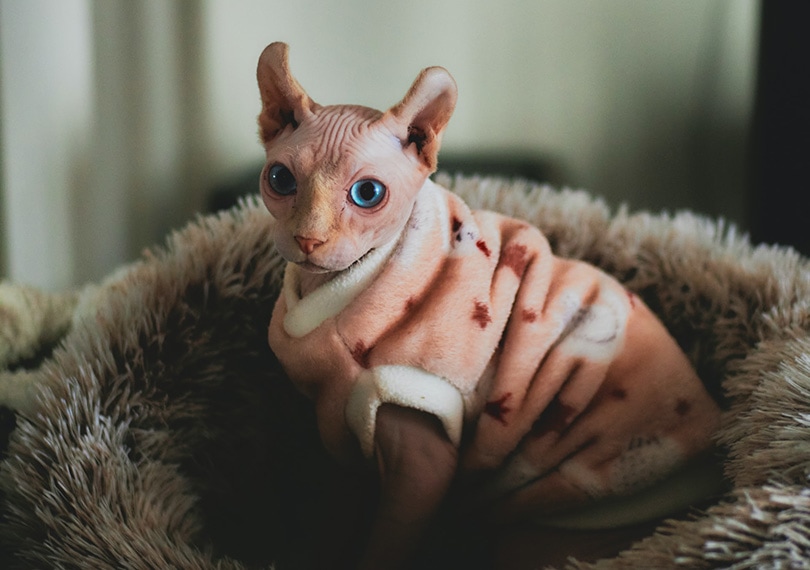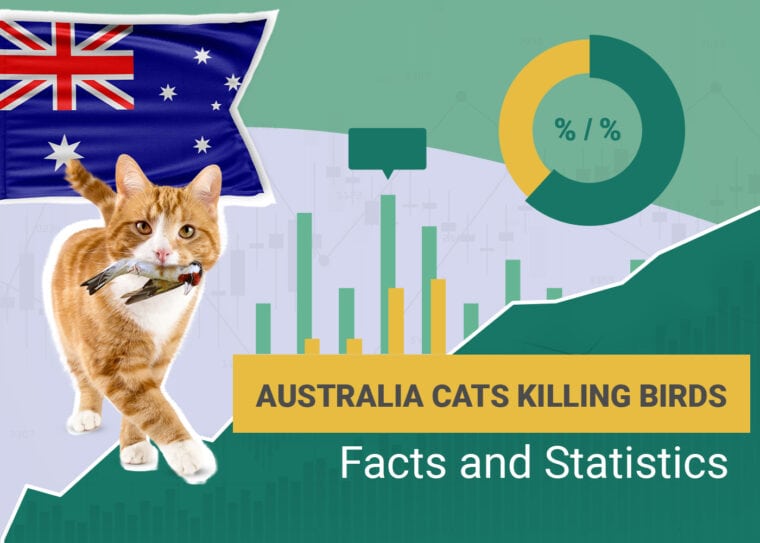
Click to Skip Ahead
Note: This article’s statistics come from third-party sources and do not represent the opinions of this website.
Around the world, cats are beloved pets and Australia is no exception. However, birds in Australia do not feel the same way toward their local cats as people do. Recent research has revealed that Australian cats kill an estimated 510 million birds yearly, equivalent to about 15 birds every second. Studies indicate that feral cats kill significantly more birds per cat than their domestic counterparts but that domestic cats kill vastly more per square kilometer.
Cats are also responsible for killing other wildlife such as reptiles and small mammals, further exacerbating the impact on Australia’s native species and habitats.
The 10 Statistics About Cats That Kill Birds in Australia
- Approximately 60% of cats in Australia are domestic cats, and 40% are feral.
- Australia’s feral cats kill an estimated 2 billion animals every year.
- Studies estimate feral cats kill between 161 million and 757 million birds a year, depending on variations in population size.
- 99% of the birds killed by feral cats are native Australian species.
- Feral cats kill four times more animals per cat than domestic cats.
- Domestic cats kill 28–52 times more animals per square kilometer than feral cats.
- Native prey species are between 20 and 200 times more likely to meet a feral cat than an indigenous predator.
- Cats are implicated in the extinction of at least 25 mammals since 1788.
- Nine bird species have become extinct, and 22 species have disappeared from Australia since Europeans arrived.
- 69% of Australia has lost at least one bird species.

 Cats in Australia
Cats in Australia
1. Approximately 60% of Cats in Australia are Domestic Cats, and 40% are Feral.
(Wildlife Research)
The population of domestic cats is thought to be fairly stable at around 3.77 million cats, and in line with global trends, growing slowly. The size of the feral cat population is harder to pin down as it fluctuates wildly from year to year. The feral cat population in Australia’s natural habitats varies in size from 1.4 million after continent-wide droughts to 5.6 million after large-scale prolonged wet periods. Another 0.7 million feral cats are estimated to live in urban areas and intensive farms.
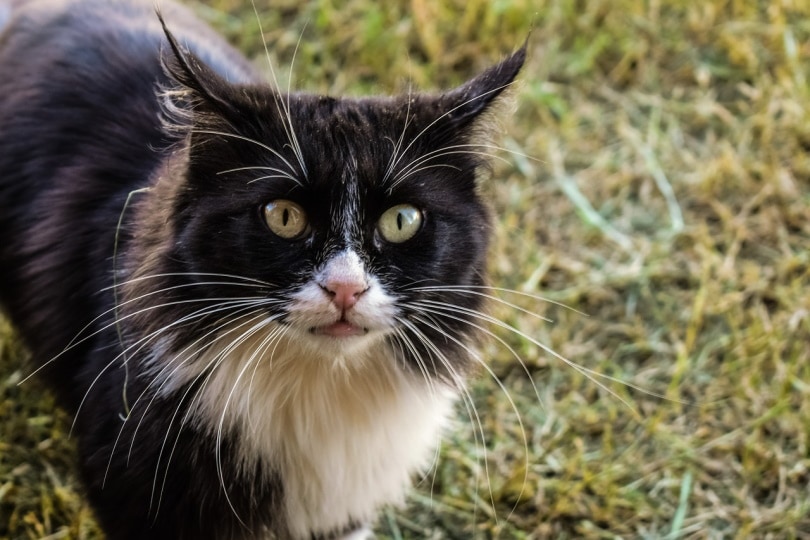
Domestic Cats vs. Feral Cats
2. Australia’s feral cats kill an estimated 2 billion animals every year.
(Wildlife Research)
Australia’s feral cats are found in over 99.8% of Australia’s mainland, and as well as birds, they kill a lot of other animals as well. Cats are carnivores and eat a diet that is almost exclusively animal-based, which in Australia means that their diet is mainly small mammals, including rodents, reptiles, lizards, and of course, birds. With millions of feral cats living in every environmental niche across the country, feral cats are killers on an epic scale, and it is estimated that on average, they kill over 2 billion different animals every year.
3. Studies estimate feral cats kill between 161 million and 757 million birds a year, depending on variations in population size.
(Science Direct)
This seems like a very large range until you remember that the size of the wild cat population across the country is heavily dependent on large-scale weather patterns and the amount of precipitation. During wet cycles, the feral cat numbers explode, and with it the destruction of the bird populations. This of course means that during periods of large feral cat populations, the total number of animals killed in a year exceeds the 2 billion average.
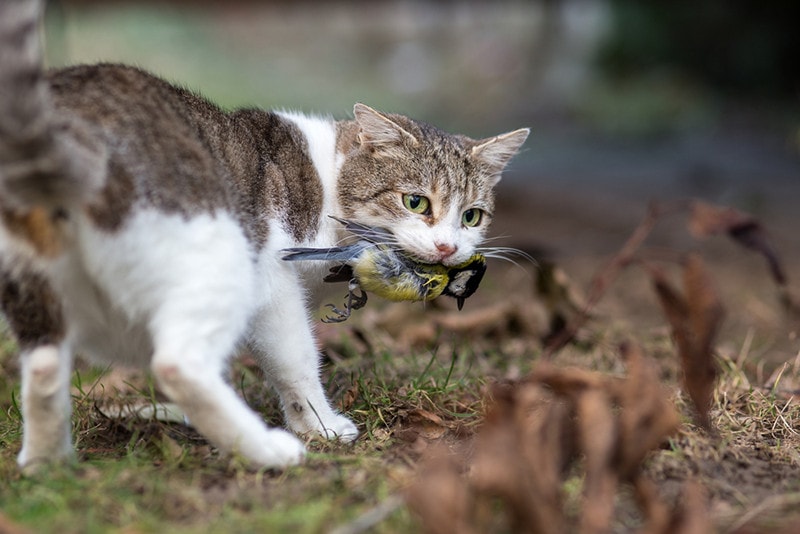
4. 99% of birds killed by feral cats are native to Australia
(Science Direct)
Many birds were introduced to Australia by early European settlers often to try and control other animals they had introduced, to shoot, inadvertently as escaped pets, or simply to remind them of home. Many of these birds are now considered invasive species and have become major pests that compete with native species for resources such as space, food, or nesting sites. Despite this 99% of the birds killed by feral cats are native bird species.
5. Feral cats kill 4 times more animals per cat than domestic cats
(Wildlife Research)
In the wild feral cats have to rely on killing prey to eat, whereas their domestic cousins are usually pampered and fed daily by their owners. This means that per animal, feral cats have to kill more prey in order to survive. On average it is estimated that feral cats kill four times as many animals as domestic cats overall making them individually far more dangerous to wildlife in general and native species specifically.
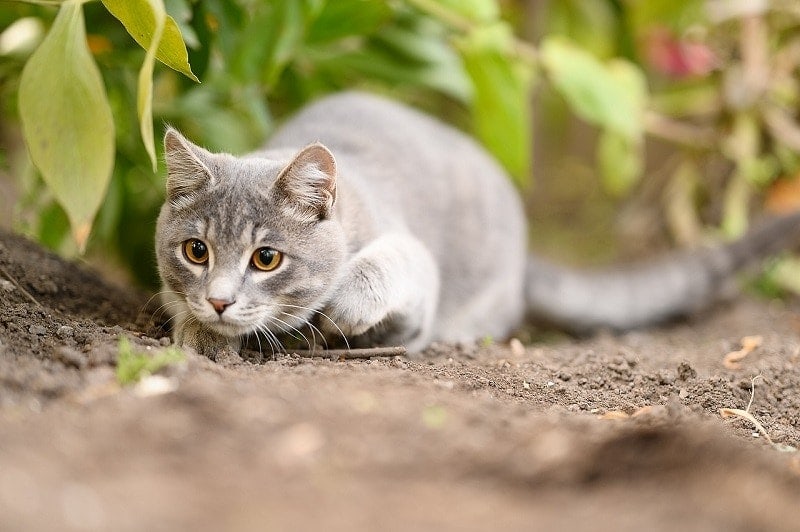
6. Domestic cats kill 28–52 times more animals per square kilometer than feral cats
(Wildlife Research)
Although feral cats individually have a higher kill rate than house cats, when it comes to how many animals these pampered urban cats kill per square kilometer they are in a league of their own. Urban cats collectively can kill from 28 to 52 times more animals per square kilometer than their wild cousins do. This is because urban cats live in very high densities meaning that although each cat is killing less, there is an awful lot of them in the same area all doing the same thing.
 Feral Cats Hunt Prey to Extinction
Feral Cats Hunt Prey to Extinction
7. Native prey species are between 20 and 200 times more likely to meet a feral cat than an indigenous predator
(Royal Society Publishing)
Scientists compared the likelihood of indigenous prey species meeting a feral cat against a native predator—a carnivorous marsupial called the spotted-tailed quoll—in a number of different environments and found that prey species were between 20–200 times more likely to meet a cat than a quoll. This is partly because cats live in higher densities than quolls, but is also because cats have a larger range. This higher frequency translates directly into a higher chance of becoming a cat’s dinner.
8. Cats are implicated in the extinction of at least 25 mammals since 1788.
(Proceedings of the National Academy of Sciences of the United States of America)
In Australia, most cat-related extinctions and population declines have happened, or are happening, far from human residential areas and therefore domestic cats have nothing to do with them. The same cannot be said about feral cats who are present in every habitat in which Australia lost mammal species in the last 234 years. Unfortunately, these mammals were all meal sized for a cat and easy for them to catch and kill, leading to their eventual extinction.

9. Nine bird species have become extinct, and 22 species have disappeared from Australia since Europeans arrived
(The Conversation)
Since Europeans arrived in Australia and introduced a wide range of animals from other parts of the world into the Australian ecosystem, Australia has suffered a tragic and lamentable loss of native and local species as these interlopers spread across the country and continent devouring and destroying species that had not been prepared by evolution to compete and survive. Birds including emus, pigeons, doves, cranes, boobies, cormorants, owls, and parrots all disappeared. Feral cats are skilled hunters of birds and were implicated directly in the demise of many bird species.
10. 69% of Australia has lost at least one bird species
(The Conversation)
Australia is home to about 830 species of birds—more if you add the species on the islands—which is about 10% of the world’s approximately 10,000 species. Of these species, about 45% are only found in Australia. Australian birds are often unique, and exert profound impacts on their habitats. Every bird species lost is a loss in diversity for the world and Australian habitats. 69% of Australia has lost at least one species of bird, with the hardest hit area having lost 17 species. Without natural predators, many of Australia’s birds nested on the ground and these proved particularly vulnerable to invasive cats.
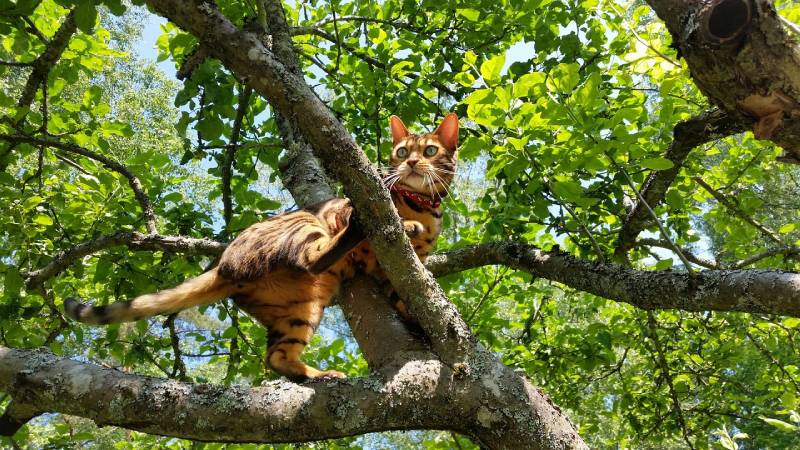
 Frequently Asked Questions About Cats in Australia
Frequently Asked Questions About Cats in Australia
Which Habitats Have Feral Cats Adapted to in Australia?
Australia is home to a diverse range of habitats, from deserts and grasslands to coastal wetlands and woodlands. Feral cats are well known for their ability to survive in harsh climates and are found across all environments across Australia. They can be found living among humans in urban areas or as solitary animals inhabiting remote locations such as alpine regions or arid zones. They also inhabit agricultural land, taking advantage of sheep farms where they can feed on both livestock and rodents. While these cats may not live exclusively in any one habitat type, they have adapted over time to make use of whatever resources are available.
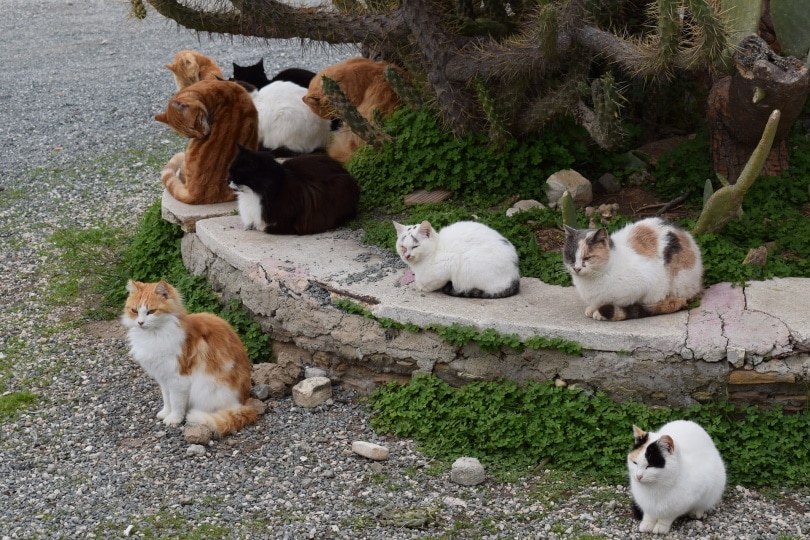
What Do Feral Cats Eat in Australia?
Cats are obligate carnivores, consuming almost no vegetative material. As hunters, cats are generalist ambush predators, capable of killing animals up to 4 kg. They mostly hunt species according to their relative abundance in an area. Cat diets consist mainly of mammals, but where they are rare or other prey types are more abundant cats will adapt. For example, in Australia’s arid zones during the summer months reptiles are a large part of feral cats’ diets.
Are Domestic Cats and Feral Cats the Same?
Domestic cats and feral cats are the same species. Where the two types of cats live in the same range they will interbreed. However, most Australian feral cats live a long way from domestic cats and people in the outback are finding very large feral cats, suggesting that there is an evolutionary pressure that is causing feral cats to grow larger and heavier. This adaptation in turn will enable feral cats to take on bigger prey; there is already anecdotal evidence of feral cats preying on wombats and small kangaroos, both of which are much larger than their usual prey.
 Conclusion
Conclusion
In conclusion, cats are a major problem for the bird population in Australia. Although it is impossible to determine the exact number of birds killed by cats in Australia every year, it is clear that it is in the hundreds of millions of birds per year. The impact on native bird populations is especially severe. Feral cats are notorious for their predation of birds, and they have caused many species to become extinct. Domestic cats also contribute to the loss of birds, as they are natural predators and hunt them indiscriminately.
Cats are truly killing machines when it comes to our feathered friends and many scientists fear that without extreme action to reduce the feral cat population and control the actions of domestic cats, we will see more unique bird species disappear from Australia.
Featured Image Credit: arsten Paulick, Pixabay


 Cats in Australia
Cats in Australia